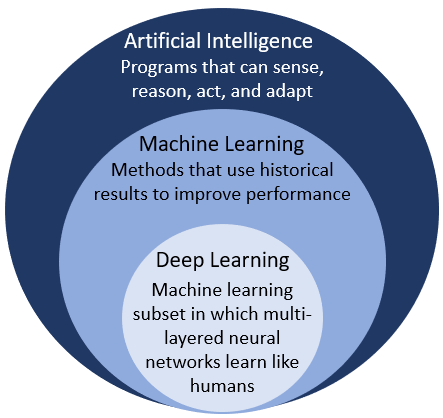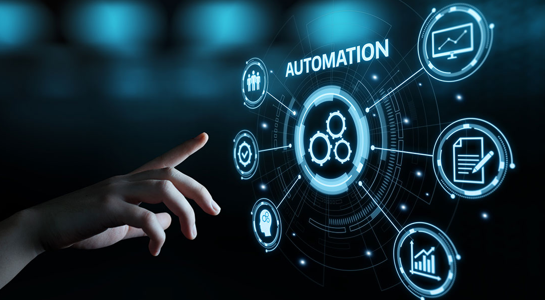
Introduction
IT process automation is a disruptive technology that promises to have a significant and sustained impact on our industry. Current product offerings allow organizations to break the paradigm of automating routine tasks by providing the functionality to automate complex support activities traditionally performed by highly-trained IT knowledge workers. Regardless of application, all automation implementations share the common goal of replacing human activities with technology to reduce costs and improve quality.
Business software applications, by their essence are designed to automate processes. Software programmers create intelligent decision trees to evaluate and refine stored data elements and display that processed data for human interaction or automate the decision-making process entirely.
IT automation products also act upon stored data or capture it for processing. Like their software application counterparts, the products analyze the data using workflows, decision trees, and embedded rules.
The automation product then performs a prescribed set of actions. The automation product can continue processing by executing additional workflows, prompt for human intervention, or complete the process by performing an activity or making a decision.
The Increasing Complexity of the IT Tech Stack Will Drive the Need for Robotic Automation
New technology architectures and products designed to solve a business or technical problem or improve operations are unveiled on a seemingly daily basis. I intended to rattle off a dozen or so disruptive, industry-changing technologies that have originated over the last few years but that list would be woefully incomplete.
What all IT professionals would agree upon is the statement below:
“The only constant in the IT profession – is change itself.”
We know that this continuous explosion of new technologies will never stop and that increasingly restrictive time constraints prevent many of us from analyzing, selecting, implementing, and effectively administering them.
Reducing Time Spent Maintaining Current Systems to Improve Future Operations
The initial goal for IT departments will be to deploy robots to reduce the amount of time humans spend on repetitive, mundane, low ROI activities. Process automation will allow IT personnel to use that additional free time to improve business operations, think strategically, plan, innovate, and deal with the ever-increasing rise in information technology complexity.
Additionally, process automation will allow IT departments to use the capabilities and strengths that robotic processes provide to fully leverage the benefits of their human counterparts. Benefits that are not currently provided by robotic processes.
Unlike manufacturing’s deployment of automation to totally replace humans:
“The relationship between humans and robots in the IT space will be harmonious, interdependent and collaborative – not competitive.”
IT professionals will interact with increasingly intelligent robotic processes as they would with any technology designed to support their needs. They will leverage the benefits of their fellow humans and robotic automations:
Human Strengths
- Creativity, thinking outside of the box
- Innovation
- Planning
- Easily adapt to changing inputs and external influences
- Ability to quickly analyze conditions with complex intersecting rules
- Natural curiosity
- Collective knowledge, group problem solving
- Ability to identify key facets of information from large, varied input sets
- Social and cultural understanding
Robotic Process Strengths
- Consistency – Repetitive tasks are performed with no deviation = higher quality
- Speed of execution
- Scalability – Build the robotic process once and deploy as needed
- Provide the ability to leverage pockets of tribal, operational knowledge by capturing, standardizing and embedding that expertise in robotic automations
Impact on the IT Profession
A question commonly asked is “Will knowledge workers be automated out of their jobs?”
Let’s answer that question by answering a second question – “is technology becoming more complex or less complex?”
Most of us will state that technology is becoming more complex, not less. IT professionals should embrace automation. It will allow them to automate mundane, repetitive support activities allowing them to focus on leveraging technology to improve business operations.
Not being automated out of a job is a good thing but robotic automation will be responsible for an evolutionary shift in the role IT plays in the modern enterprise.
Robotic Processes, Machine Learning and Artificial Intelligence
Since the inception of the computer, IT support personnel’s primary focus has been on process. As intelligent, robotic systems improve their ability to learn, they will be able to use historical experiences to obtain an understanding of the current environment to select the correct course of action to accomplish the assigned goals. Robotic automation will become responsible for not only process execution but also process improvement.
As a result, human personnel’s primary focus must, and will evolve from process/information oriented to information oriented. IT professionals will be working with business personnel, increasingly intelligent data stores and robotic processes to leverage information to analyze past performance, optimize current operations, and predict future business trends.
Future IT Departments Will Consist of Both Humans and Robots
A competitive market arena will continue to accelerate the features and functionality provided by automation products. As the offerings mature, they will become more robust, intelligent, and cost effective. Advances in artificial intelligence will enable robotic processes to teach themselves, which will allow them to play an ever-increasing role in decision making.
As a result, the set of activities and decisions assigned to humans and robots will be fluid in nature. As more activities and decisions are assigned to robots, their human counterparts’ roles will continue to evolve. Robots will free IT professionals to focus on strategic activities that only humans can perform.
Robots will not replace us; they will allow us to analyze, implement, and administer increasingly complex technology architectures. Architectures that solve business problems, increase competitive advantage, improve decision making, and reduce the cost of doing business. That is a good thing for technology professionals and the business operations we support.

I hope you enjoyed my article on IT Robots vs Human Knowledge Workers
To learn more about the services we provide to our clients, please visit our RadixBay Home Page.
Chris Foot
RadixBay Senior Strategist, Managed Services
Oracle Ace Alumni
TechTarget Author



